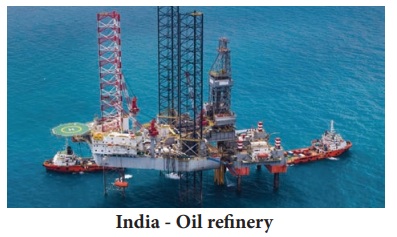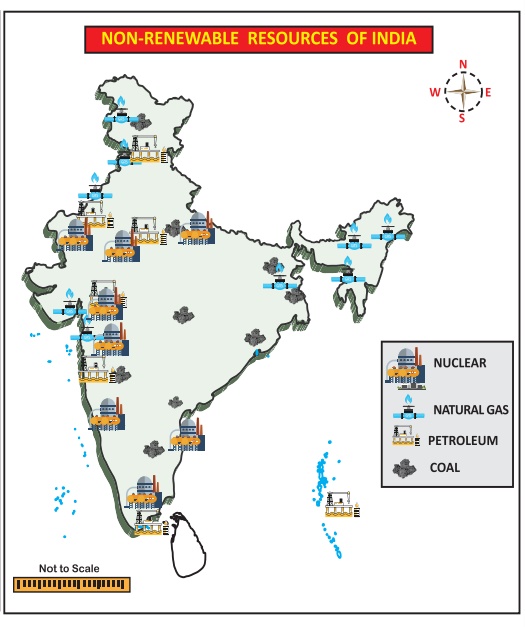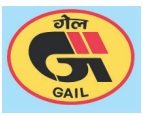Chapter: 10th Social Science : Geography : Chapter 4 : India - Resources and Industries
Energy Resources in India
Energy Resources
The
resources from which the electricity generated are called energy resources.
Electricity is an important component of our life. No day to day activity takes
without the use of this energy. It is also the key factor for all economic
activities and industrial development. Energy resources can be classified into
renewable and non-renewable. Coal, petroleum, natural gas and nuclear minerals
are the sources of non renewable energy. Water, sun light, wind, bio gas, tides
etc., are the sources of renewable energy.
Non-Renewable Energy Resources
a) Coal
Coal is
an inflammable organic substance composed mainly of hydrocarbons.
Coal is
available in the form of sedimentary rocks. It is used in the generation of
thermal power. It has close association with the industrial development of any
country. Since it is a valuable one, it is called as “Black Gold”. Based on
carbon content, it is classified in
to the following types.
Anthracite: 80 to 90%
Bituminous: 60 to 80%
Lignite: 40 to 60%
Peat: less than
40%
Coal is
an important source of energy in India with its varied and innumerable uses. It
can be converted into gas, oil, electricity and thermal power. Besides, it forms
a basic raw material for the production of chemicals, dyes, fertilizers,
paints, synthetic and explosives.
Indian
coal is mostly associated with Gondwana series of rocks and is primarily found
in Peninsular India. The states of Jharkhand, odisha, West Bengal and Madhya
Pradesh alone account for nearly 90% of coal reserves of the country. About 2%
of India’s coal is of tertiary type and is found mostly in Assam and Jammu
& Kashmir.
Coal India Limited (CIL) is an Indian state-controlled coal
mining company headquartered in Kolkata, West Bengal.

Jharkhand
is the largest coal producing state in the country followed by odisha,
Chhattisgarh, West Bengal, Madhya Pradesh, Andhra Pradesh and Maharashtra.
Indian
lignite (brown coal) deposits occur in the southern and western parts of
Peninsular India particularly in Tamil nadu, Pudhucherry and Kerala.
The
Ministry of coal has over all responsibility of determining policies and
strategies in respect of exploration and development of coal resource in India.
Coal India Limited (CIL), NLC India Limited (NLCIL) and Singareni Collieries
Company limited (SCCL) are its public sector under takings.
b) Petroleum (or) Crude oil
The word
petroleum has been derived from two Latin words petro (meaning – Rock) and
oleum (meaning oil) . Thus petroleum is oil obtained from rocks of the earth.
Therefore, it is also called mineral oil. Petroleum is an inflammable liquid
that is composed of hydrocarbons which constitute 90- 95% of petroleum and the
remaining is chiefly organic compounds containing oxygen, nitrogen, sulphur and
traces of organ metallic compounds.

The Ministry of Petroleum and Natural Gas (MOP&NG) is a
ministry of the Government of India. It is responsible for the exploration,
production, refining, distribution, marketing, import, export, and conservation
of petroleum, natural gas, petroleum products, and liquefied natural gas in
India.

Western coast
offshore oil fields
1. Mumbai high oil fields (largest 65%)
2. Gujarat coast (2nd largest)
3. Basseim oil feild, south of Mumbai high
4. Aliabet oil feild, south of Bhavanagar
5. Ankleshwar
6. Cambay-Luni Region
7. Ahemedabad-Kalol Region
Eastern coast
offshore Fields
1. Bharmaputra valley (Dibrugarh and Sibsagar districts of upper
Assam.)
2. Digboi oil feilds (oldest fields in country)
3. Nahoratiya oil fields (south west of digboi)
4. Moran-Hugrijan oil field (Southwest of Nahoratiya)
5. Rudrasagar-Lawa oil feilds (sibsagar districs of assam)
6. Surma valley (Badarpur, Masimpur, Patharia)
7. Offshore of Andaman and Nicobar, Gulf of mannar, Baleshwar coast, Punjab, Haryana and Uttar Pradesh.

Petroleum
is used as a source of power and fuel for automobiles, aeroplanes, ships and
locomotives. Lubricants, kerosene, vaseline, tar, soap, terylene and wax are
its by products. Oil in India is obtained from both from on-shore and off-shore
areas.

c) Natural Gas
Natural
gas usually accompanies the petroleum accumulations. It is naturally occurring
hydro carbon gas mixture consisting primarily of methane, but commonly includes
varying amounts of other higher alkanes and sometimes a small percentage of
carbon dioxide, nitrogen and hydrogen sulphides. It is formed when layers of
decomposed plants and animals are exposed to intense heat and pressure over
thousands of years. It is used as a source of energy for heating, cooking and
electricity generation. It is also used as fuel for vehicles and as a chemical
feedstock in the manufacture of plastics and other commercially important
organic chemicals.
GAIL (formerly known as
Gas Authority of India Limited) is the largest state-owned natural gas
processing and distribution company in India. It is headquartered in New Delhi.

India has
a very large proportion of tertiary rock and alluvial deposits particularly in
the extra peninsular India. These sedimentary rocks, which were once under the
shallow seas, hold the possibility of harbouring oil and gas deposits. The
highest concentration of natural gas is found in the Mumbai high and basseim
oil fields. Gujarat, Assam, Neypaltur, Mangmadam in Thanjavur district in Tamil
nadu, Tripura, Rajasthan, Arunachal Pradesh, Punjab, West Bengal are the other
areas where natural gas reserves have been discovered.
Compressed natural gas (CNG) (methane stored at high pressure)
is a fuel which can be used in place of gasoline, diesel fuel and propane/LPG.
In comparison to other fuels, natural gas poses less of a threat in the event
of a spill, because it is lighter than air and disperses quickly when released.
Biomethane – cleaned-up biogas from anaerobic digestion or landfills – can be
used. Natural gas run vehicles are increasingly used in Delhi, Ahmedabad,
Mumbai, Pune, Kolkata Lucknow, Kanpur, Varanasi, etc.
Conventional Energy Sources
a) Thermal power
Thermal power is generated using fossil fuels like coal, diesel, petroleum and Natural gas. National Thermal Power Corporation [NTPC] was established in 1975. At present NTPC has 13 coal based super thermal power projects and 7 gas / liquid fuel based combined cycle projects in the states of Assam, Bihar, Jharkhand, Chhattisgarh, Mizoram and West Bengal. Neyveli, Mettur, Thoothukudi and Ennore (Chennai) are the important thermal power stations in Tamil nadu.
b) Nuclear power
The
energy released during nuclear fission or fusion is used to generate
electricity. Nuclear energy is generated mainly from the minerals of Uranium
and Thorium. The first nuclear power station was setup at Tarapur near Mumbai in
1969. Later atomic reactors were installed at Rawatbhata (335 MW), near Kota in
Rajasthan (100 MW), Kalpakkam (440 MW) and Kudankulam (2,000 MW) in Tamil nadu
and Narora (235 MW) in Uttar Pradesh, Kaiga in (235 MW) in Karnataka and
Kakarapara (235 MW) in Gujarat.
The Nuclear Power CorporationofIndiaLimited (NPCIL) is an Indian
public sector undertaking based in Mumbai, Maharashtra. It is wholly owned by
the Government of India and is responsible for the generation of nuclear power
for electricity.

Renewable Energy Resources
a) Hydro power
Power
generated from water is termed as hydroelectricity. Hydro power is the energy
harnessed from running water. Hydro power is considered as one of the most
economic and non-polluting sources of energy. It contributes nearly 7% of
global electricity production. The cost of production of hydroelectricity is
relatively low, making it a competitive source of renewable energy. It is also
a flexible mode of power generation as the quantity of production can either be
increased or decreased very quickly adapting to changing demands.
The first hydro-electric power station in India was established
at “Darjeeling” in 1897.
National Hydroelectric Power Corporation is located in
Faridabad, India
b) Solar Energy
Solar
Power is the conversion of sunlight into electricity, either directly using
photovoltaics (PV) or indirectly using concentrated solar power (CSP).
Concentrated solar power systems use lenses or mirrors and tracking system to
focus a large area of sunlight into a small beam. Photovoltaics convert light
into an electric current using the photovoltaic effect.

Solar Energy
Corporation of India Limited is a Government of India Enterprise.Its head quarter is
located at New Delhi.
The mass
objectives of the solar thermal energy programme, being implemented by the
Ministry of Non-Conventional Energy Source (MNES) are market development,
commercialisation and utilisation of heat energy requirement of different
applications in domestic, institutional and industrial sectors. Solar power is
used in water heaters, refrigerators, drying, street lighting, cooking,
pumping, power generator, photovoltaic cells, salon parts etc. Andhra Pradesh,
Gujarat, Rajasthan, Maharashtra and Madhya Pradesh are the major solar power
producers.
c) Wind Energy
Wind
energy is extracted from air flow using wind turbines. It is a cheap and
pollution free source of energy. Power from wind mills are used for pumping
water and to sail propel ships. Wind power is plentiful, renewable, widely
distributed, clean and produces no greenhouse gas emissions during operation.
These plants occupy only a less space.
Tamil nadu has the largest installation of wind turbines in the country
in the Aralvoimozhi area near Kanniyakumari is the largest concentrations of
wind farm capacity at a single location in the world.
The
development of wind power in India began in 1986 with first wind farms were set
up in coastal areas of Gujarat (Okha), Maharashtra (Ratnagiri) and Tamil nadu
(Thoothukudi) with 55 KW Vestas wind turbines. The capacity has significantly
increased in the last few years. India has the fourth largest installed wind
power capacity in the world.
The National Institute of Wind Energy (NIWE), Chennai was
established in Tamil Nadu in 1998 as an autonomous institution under the
administrative control of the Ministry of New and Renewable Energy. NIWE main
activities include resource assessment testing and certification.

d) Biomass Energy
Bio
energy may be obtained through bio-degradable materials like animal dung,
kitchen wastes, water hyacinth, agricultural residues and city wastes etc. It
is clean and cheap source of energy. Energy derived from biomass is mostly used
for domestic purposes.
e) Tidal and wave Energy
There are
two main sources of ocean energy. They are Ocean tides and Ocean waves. The
Gulf of Cambay is the best suited area for tidal energy. This is followed by
Gulf of Kachch (1,000MW) and sunderbans (100MW).
An wave
energy power plant of 150 KW(maximum) has been installed at vizhinjam near
Thiruvananthapuram. An another plant of this kind has been set up near
Andaman& Nicobar Islands.

Related Topics